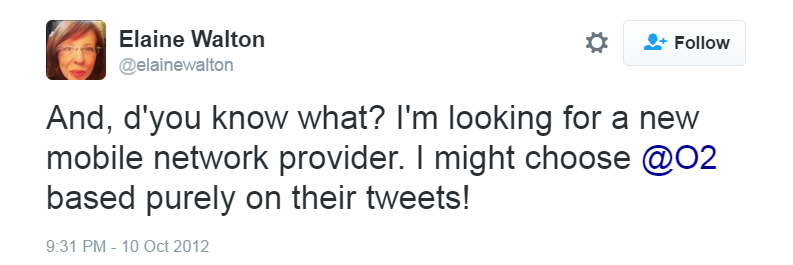5 psychological tricks to use in your SMM strategy

Social Media Marketing is a field full of innovations and tech advice, and is often compared to purely technological SEO (for some reason). Yet, social media is a “human” side of digital marketing, and should be treated as such. We know that traditional marketing is largely based on social psychology, but it isn’t often clear what psychological methods marketers should apply in SMM, and how they should do that. It’s a shame to miss out on this kind of influence since social media magnifies psychological traits (e.g., humans talk about themselves 30–40% of all speech in the real world, but online that number jumps to about 80% if you look at social media posts), making psychological methods often more effective than they are offline.
Therefore, in this post, we’ll look at things you should keep in mind when coming up with the content you post on social media.
1. People’s online behaviour is their chance for self-presentation.
Research:
Since social media platforms became increasingly popular, research has tried to find an explanation for people’s online behaviour (i.e. why they post, share, and comment). They found two main categories that these explanations fall into: a need to belong and self-presentation. Here we’ll discuss self-presentation as the more relevant one.
Social media platforms give people the ability to construct a public profile. A literature review study found that self-presentation through social media again falls into two categories:
1. Affirming something about oneself.
People use social media to show their personality to other people, to communicate to other people their talents, desires, fears - “true selves”. 68% share posts on Facebook to give people a better sense of who they are and what they care about. This way they use social media to affirm something about themselves.
2. Self-promotion.
The second reason for posting/liking/sharing is to show users’ socially desirable identities that they aspire to have offline but might have not yet embodied. For example, supporting causes online that they haven't (yet) supported offline in any way.
Marketing takeaway:
Engagement is one of the biggest issues for social media marketers. Why would someone share or like your brand’s posts? The answer is that your audience would do it if your post somehow confirms their identity or the socially desirable identity they aspire to have. Simply put, your online posts/questions/contests should be beneficial to the image of your target audience. This, of course, involves knowing your audience very well.
Example:
Dr Martens knows their audience is young and rebellious. Their campaign #standforsomething lets users show that off plus show what they care about. 
Similarly, if you are promoting rap gigs to teens, post a contest for the best homemade rap video. Chances are, a lot of your target audience have always wanted to make one. It will let them show their desirable identity as a cool rapper. Taking an example from a completely different world, if you are promoting your book shop to the middle-aged Internet users, post a questionnaire that tests how well-read they are. Many won’t miss a chance to test and then present to the public their knowledgeable identity.
2. The more people are exposed to something, the more they like it.
Research:
Since the 1960s, research has shown that mere exposure leads to more positive attitude to stimuli. In one of the most famous experiments, Harrison showed Chinese characters to non-Chinese-speaking participants. He showed each character 1 to 25 times, asking participants to guess the meaning of the characters. The more often a participant saw a character, the more positive meaning they gave.
Marketing Takeaway:
In this case, the takeaway is simple: post a lot, don’t be afraid to repost and repeat your content.
Example:
Most brands that have a working SMM strategy post 2-3 times a day, thus increasing exposure even when engagement is not present. Public figures often post even more times a day, never really leaving our news feed and becoming as familiar to us as our neighbours. 
3. When people do someone a favour, they like them more.
Research:
Many have heard the term “cognitive dissonance” and didn’t really know what it means. Well, today is your “random education day”. Cognitive dissonance is a theory that says that people change their attitudes or behaviour to reduce the mental discomfort that they experience if their attitudes and actions don’t match. A study that followed the cognitive dissonance research showed that if people are asked to do someone that they initially dislike or have a neutral attitude to a favour, they subsequently grow to like this person. A theoretical explanation for this phenomenon is that people feel a need to justify their actions, so they justify their action of doing a favour by convincing oneself that they like this person. Incidentally, it works the other way round too. When we do harm to someone we had no bad feelings for initially, we grow to dislike the person simply to justify ourselves.
Marketing Takeaway:
Although the explanation was pretty complicated, the takeaway is once again simple: ask your customers, users, and audience for favours. If they’re willing to help out — answer surveys, check your content out, share and leave a review — their opinion of you is likely to go up.
Example:
Ask your customers to fill out your survey without promising anything back.

4. People judge specific qualities based on the general impression.
Research:
We tend to evaluate people positively across the board or negatively across the board, rather than judging them accurately in different areas. This is why people eagerly quote the opinions of movie stars on economics (no offence). This is called the Halo effect and is best shown in a classic study from many years ago. Moreover, some studies have shown that a judgement on one quality leads to the similar judgement on the unrelated quality. For example, this study showed that people genuinely mistake attractiveness for intelligence, giving higher scores for essays written by someone attractive.
Marketing Takeaway:
It’s not news that the overall impression of the company affects people’s belief in products’ quality. However, break down the Halo effect, and you’ll know how your SMM strategy should look like. Produce helpful articles, and your audience will believe that you make quality goods or services. Make your online presence humorous and kind - qualities people are generally liked for - and the likeness will transfer to your products.
Example:
There are not actually many true SMM stars, so I mention O2 a lot. They are famous for acting caring and funny on social media, and sometimes it is just impossible not to like them plainly due to their social media behaviour. Which leads to things like this:

5. People are generally conformists.
Research:
There is so much research on people's conformity that I wouldn't even know where to start if our topic was the conformity itself. Just trust me, it's true: most people would gladly simplify their decision-making process by believing and following other people (surely not you, you are smarter than that). Luckily, as Social Media Marketers, we're only interested in the field of social proof for now. The principle of social proof suggests that “we view a behaviour as correct in a given situation to the degree that we see others performing it” (Cialdini, 1993).
Marketing Takeaway:
The first kind of social proof in SMM that comes to mind is the number of followers you have on each of your web pages. Grow your social following independent of whether they are your target audience or not. People will trust your brand more the more they see other people trusting your brand. The second kind of social proof is mentions of your brand by other people. Surely, if these other people are the authority - this is even better. But don't feel like you should only brag if Forbes has mentioned you. People don't only follow authorities - people follow other people too.
Example:
If you see someone posting something good about your brand, share it and thank the author for the mention.  This was it! If you'd like to find out more about any research or applications in this field, or just want to chat - the comment section below is for you. :)
This was it! If you'd like to find out more about any research or applications in this field, or just want to chat - the comment section below is for you. :)













